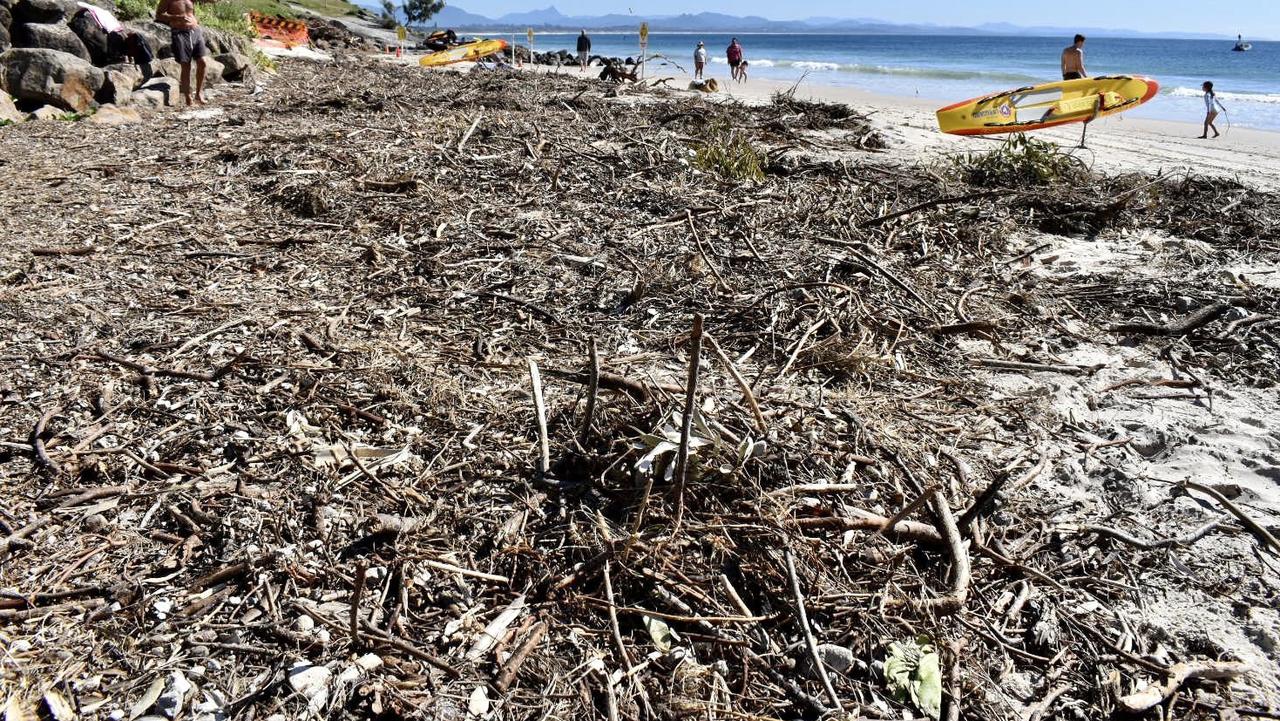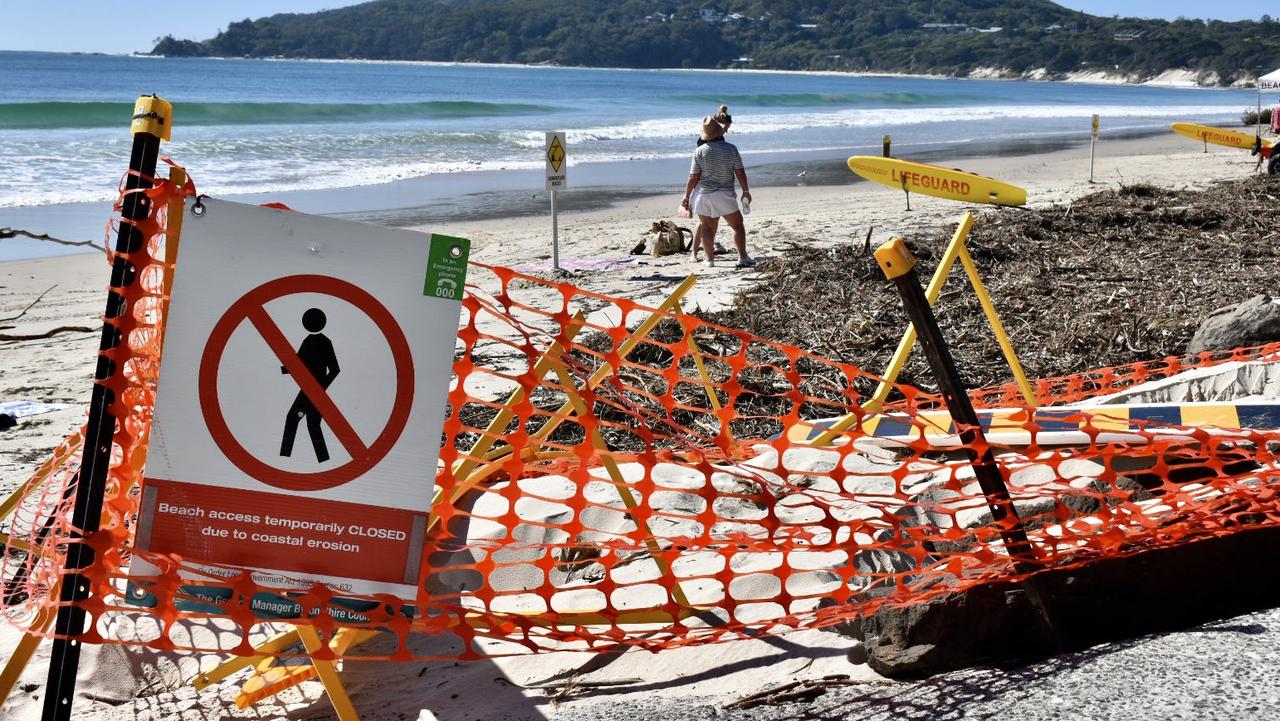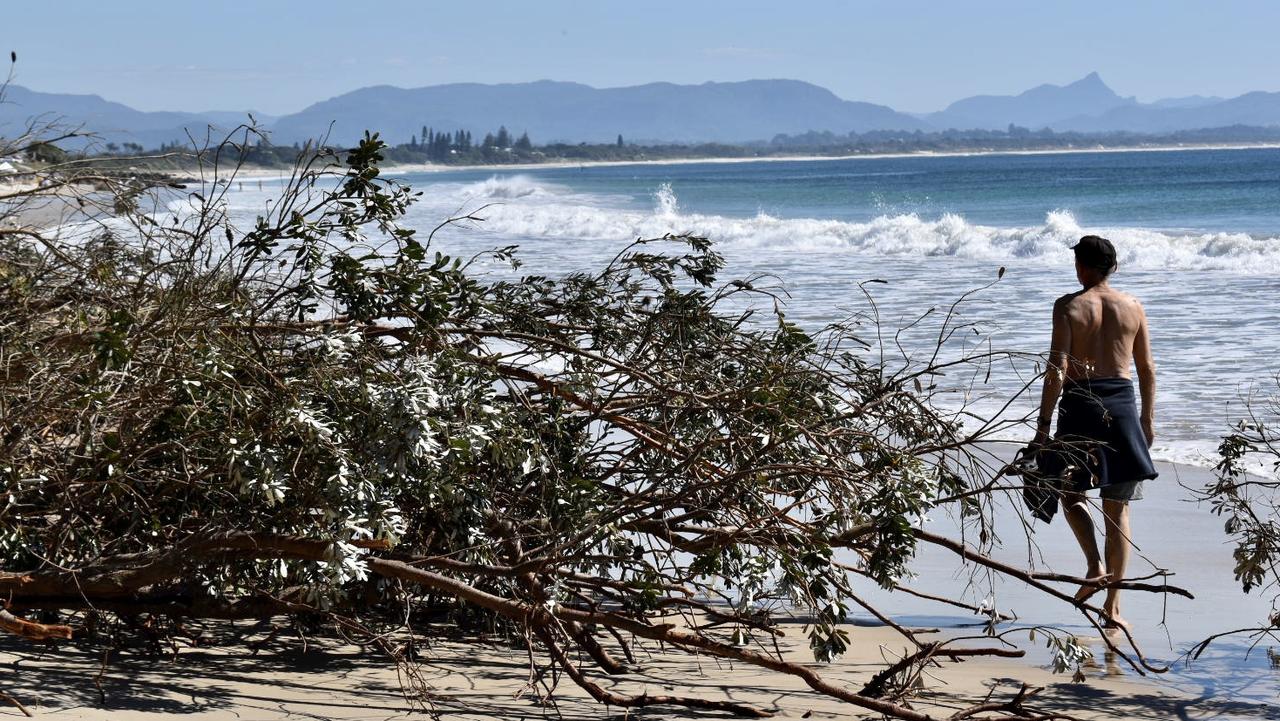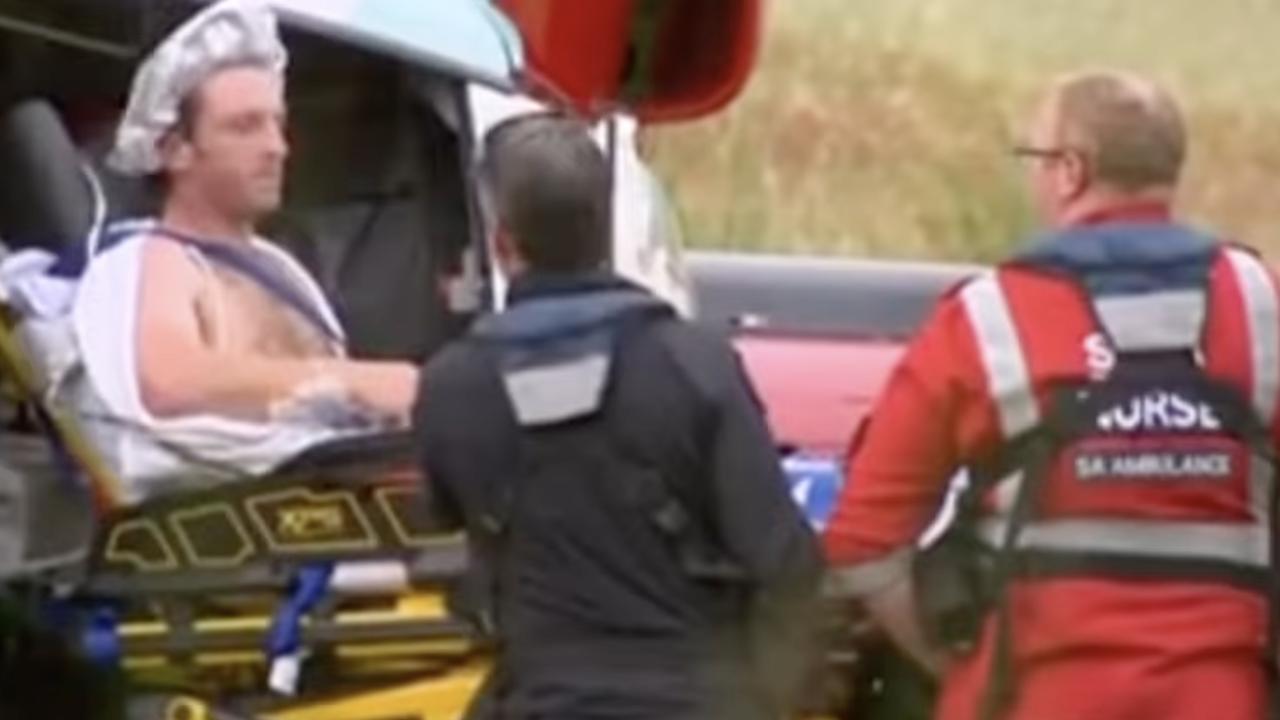Byron Bay: Iconic Aussie beach left unrecognisable by erosion
One of Australia’s most famous tourist attractions and natural beauties has been almost entirely wiped out after high tides swept the coast.

Byron Bay’s main beach has been a drawcard for tourists around the world for many years, but if they are ever allowed back in they’ll find there’s almost nothing left of it.
The situation at the tourist town’s crown jewel was already dire before high tides swept the coast over the past three days, wiping out sand dunes and leaving a trail of destruction in their path.
Now what was once a pristine beach of golden sand is filled with fallen trees and rugged debris. Visitors and local swimmers are being asked to find safer locations to enjoy the sea.
Byron local Harry McGhie has been living in the area for 20 years and said it’s never been this bad — even after a double cyclone in 2009.
“There’s pretty much nothing there any more,” he told news.com.au. “You can’t really even say it’s a beach anymore. It’s very sad.
“It’s also pretty dangerous with heaps of broken trees and poles floating around in the water.”

Dave Byrant who volunteers for a Green & Clean Awareness Team to look after the beach said that what has happened in the past few months is “pretty awful”.
“In the past 4-5 months we’ve lost 20 to 30 feet of the dunes. I’m estimating by Christmas we will lose another 10 feet and that would see beach cafe destabilised and needing major reinforcing to save it,” he wrote on Facebook.
“This year’s erosion has been devastating. I’m not a climatologist or ocean expert but the erosion and loss of dune and amount of trees is phenomenal. If we get the forecast storms, rain and potential cyclones we are overdue for, Lawson Street might have it’s own beachfront … but maybe I’m just talking BS.”

Byron Shire Deputy Mayor Sarah Ndiaye said the issue of coastal erosion needs urgent attention.
“I don’t think anyone has seen erosion to this scale from Clarke’s along to Main Beach in living memory and it’s happened faster than anyone predicted,” she said. “There’s trees falling into the sea that were way back in the tertiary dune and ancient middens that have been uncovered.
“There is a process of natural erosion occurring of course, but it’s more than that, and all relevant stakeholders need to work together to mitigate any contributing factors like stormwater runoff or inappropriate built form or materials being used in on the coastline. “There is a huge slug of sand just off shore but it doesn’t seem to be able to attach itself in any meaningful way.”

She said she has been pushing for some action in this critical area for a few years now. “Council is doing whatever it can but they are not the primary stakeholders and while no one could agree, nothing was done but doing nothing has been detrimental so far,” she said.
“I’m hoping all parties can work cooperatively to save what we can of this most precious coastline.”
Emergency work has now started at the adjacent Clarkes Beach — where major erosion over the weekend left a main sand dune just centimetres from the Beach Byron Bay Cafe.
The venue’s operator, Ben Kirkwood said over the next two weeks three-tonne geo bags will be stacked 11-high in a pyramid formation at the toe of the dune.
“This is all about buying time, because we were up against Mother Nature essentially before this,” he told the ABC. “The bigger picture is what going to happen from here, this isn’t an endgame solution.
“If nothing is done we could be talking in a few years back to Lawson Street and the multimillion-dollar properties there. So this isn’t just about this restaurant, it’s about this whole stretch of coast.”
Benjamin.graham@news.com.au




